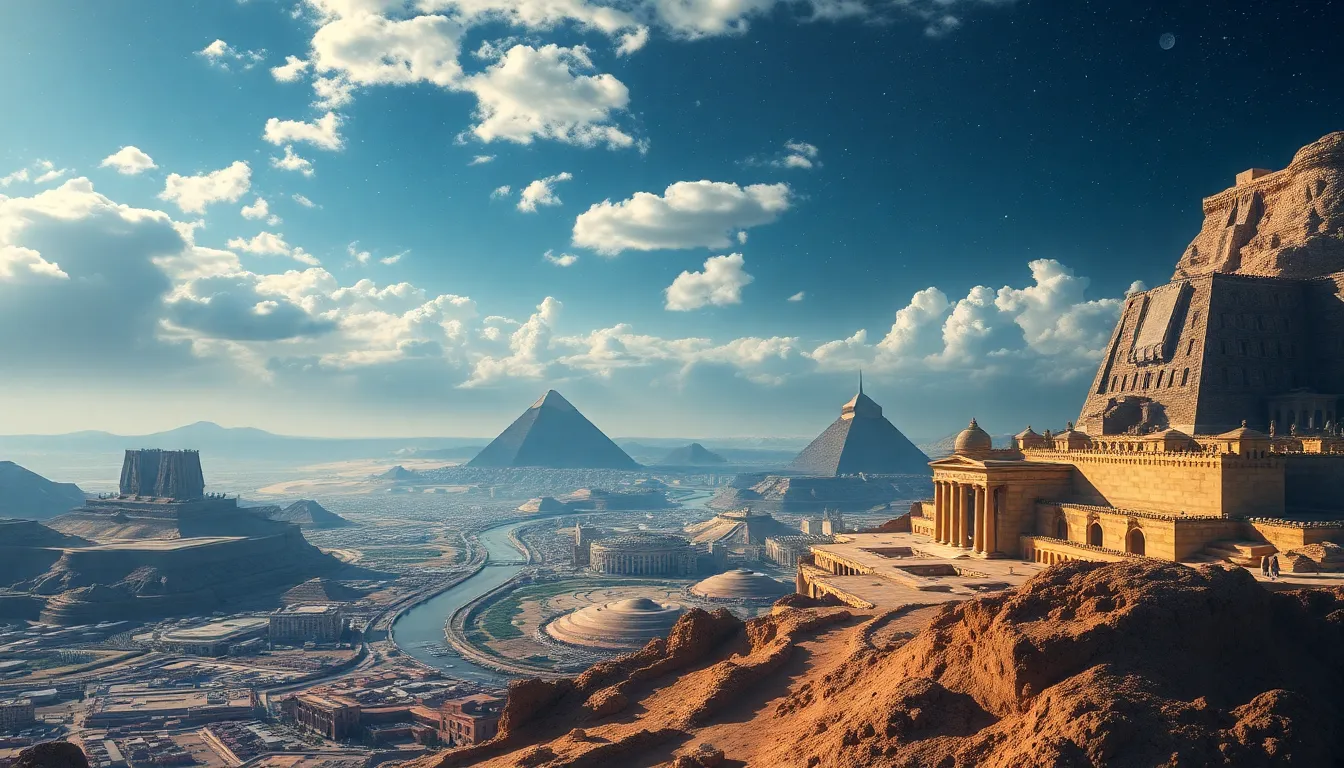The Mythical Geography of the City of Mendes
I. Introduction
The City of Mendes, known in ancient Egyptian as Mn-nfr or Mendes, holds a prominent place in the historical and mythological tapestry of ancient Egypt. As one of the primary centers of worship for the ram-headed god Banebdjedet, Mendes was not only a geographical location but also a significant cultural and religious hub. This article aims to delve into the mythical geography of Mendes, exploring its historical context, geographic features, and the rich mythology that surrounds this ancient city.
II. Historical Context of Mendes
Mendes was situated in the northeastern part of the Nile Delta, in what is now modern-day Egypt. This city flourished during various periods of ancient Egyptian civilization, particularly during the Old Kingdom and the Late Period. Its significance was largely rooted in its religious practices and its association with fertility and renewal.
The role of Mendes in mythology and religion cannot be overstated. The city was dedicated to Banebdjedet, a deity often depicted as a ram or a man with a ram’s head. He was considered a manifestation of the sun and was associated with resurrection and the afterlife.
Key figures associated with Mendes include:
- Banebdjedet – The primary deity of Mendes.
- Isis – Often worshipped in connection with the fertility aspects of Mendes.
- Osiris – Linked to themes of death and rebirth.
III. Geographic Location and Description
The actual geographic location of Mendes is in the northeastern Nile Delta, near the modern city of Tell El-Rub’a. The city was strategically positioned near the Nile River, providing access to trade routes and fertile lands, which were essential for agriculture.
While Mendes was a real place, its mythical geography extends beyond its physical boundaries. In ancient texts, Mendes is often described as a land of abundance and fertility, where the cycles of life and death are celebrated through various rituals.
The natural features surrounding Mendes included:
- The lush banks of the Nile, which provided sustenance.
- Rich fields that contributed to agricultural prosperity.
- Nearby marshlands, which were believed to be sacred and teeming with life.
IV. The Mythology of Mendes
The mythology of Mendes is rich and varied, with several creation myths associated with the city. In one myth, Mendes is described as the birthplace of Osiris, emphasizing the city’s importance in the cycle of life and death.
The Mendesian gods played a significant role in ancient beliefs, with Banebdjedet symbolizing not just physical fertility but also spiritual rebirth. The symbolism of Mendes is deeply intertwined with themes of:
- Life: Represented through the fertility of the land and the worship of agricultural deities.
- Death: Linked to the worship of Osiris and the practices surrounding funerary rites.
- Rebirth: Celebrated through festivals that honored the cyclical nature of the seasons.
V. Sacred Spaces and Structures
Within Mendes, several significant temples and monuments were constructed to honor the gods. The most notable among these is the Temple of Banebdjedet, which served as the center of worship for the ram-headed god.
Ritual practices associated with these sacred sites included:
- Annual festivals celebrating the rebirth of the god.
- Ritual sacrifices and offerings made to ensure the fertility of the land.
- Processions that would often involve the community in collective worship.
The influence of Mendes on architectural style is evident in the intricate designs of its temples, which often featured:
- Massive stone columns carved with hieroglyphics.
- Beautifully adorned walls depicting scenes of mythology.
- Open courtyards for communal gatherings and rituals.
VI. The Cultural Impact of Mendes
The cultural impact of Mendes extends beyond its geographical and historical significance. The city’s mythology influenced various forms of art, literature, and folklore throughout ancient Egypt. Mendes was often depicted in artistic representations, showcasing its deities and the rituals performed in their honor.
In modern interpretations, Mendes continues to capture the imagination, appearing in:
- Literature that explores ancient Egyptian mythology.
- Films and documentaries that depict the rich cultural heritage of Egypt.
- Artistic works that draw inspiration from the symbolism of Mendes.
The legacy of Mendes in contemporary discussions of mythology is a testament to its enduring significance in understanding ancient beliefs and practices.
VII. Archaeological Discoveries
Archaeological excavations in Mendes have yielded key findings that shed light on its mythical geography. Excavations have uncovered:
- Artifacts associated with ritual practices.
- Remnants of ancient temples and their architectural features.
- Inscribed stones detailing the history and mythology of Mendes.
Insights gained from these discoveries have enhanced our understanding of Mendes as a center of worship and its role in the larger context of ancient Egyptian civilization. However, challenges in preserving Mendes’ archaeological heritage persist, including:
- Environmental factors that threaten the site.
- Urban development encroaching on historical locations.
- Limited funding for ongoing archaeological research.
VIII. Conclusion
In summary, the mythical geography of the City of Mendes reflects its profound significance in ancient Egyptian culture. From its historical context and geographic features to its rich mythology and cultural impact, Mendes stands as a testament to the complexities of ancient belief systems.
The enduring legacy of Mendes in modern culture serves as a reminder of the importance of understanding and appreciating ancient mythological landscapes. As we continue to explore the depths of these ancient narratives, it is essential to promote further study and appreciation of the cultural heritage that shapes our understanding of the past.




